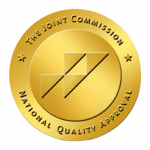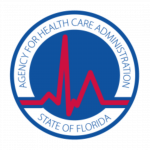The US opioid epidemic is one of America’s most pressing public health issues. There were more than 64,000 drug overdose deaths in the US in 2017, a majority involving opioids.
Opioids are a type of narcotic used to treat pain and discomfort. In the United States, they are among the most prescribed drugs in the country. In 2015, there were more than 59 million prescriptions written for opioids.
The opioid epidemic has grown into a national crisis with no end in sight. In 2015, more than 33,000 Americans died from overdoses related to opioid-based prescription painkillers such as oxycodone and hydrocodone.
From 1999 to 2017, there have been more than 275,000 deaths due to drug overdoses in the United States. In 2017, there were 64,000 drug overdose deaths in the US. Of those victims of drug overdoses: 64% involved a prescription opioid 14% involved heroin. These prescriptions greatly increased over the past 20 years.
The US opioid epidemic is an ongoing issue in the United States that has been increasing since the late 1990s. The cause of the opioid epidemic is the result of the over-prescription of painkillers by doctors and dentists, which led to many people becoming addicted to these drugs.
A Growing Problem
The opioid epidemic is a growing problem in the United States as well as other countries. It is becoming increasingly more of a problem because it’s so difficult to stop. Opioids are a type of narcotic prescribed legally, but some users take the drug without one.
How did the opioid epidemic start? The opioid epidemic has been the worst drug epidemic in American history. Opioids are a class of drugs that includes the illegal drug heroin. It includes powerful prescription painkillers like oxycodone, hydrocodone, codeine, morphine, as well as fentanyl.
The opioid epidemic started with doctors. For example, doctors overprescribed opioid medications to patients who didn’t need them, or patients taking more than prescribed.
According to the National Institute on Drug Abuse:
In the late 1990s, pharmaceutical companies reassured the medical community, stating patients would not become addicted to prescription opioid pain relievers. However, healthcare providers began to overprescribe them. Subsequently, this led to widespread misuse of these medications. All seemingly before the knowledge of the addictiveness.
How to Prevent Opioids from Destroying Your Life
Opioids are a class of powerful analgesics that treat pain. They are also a source of recreational drugs. This recreational use links to many addictive behaviors in the past decade. Knowing the risks, you can prevent opioids from destroying your life.
The first and most important thing you can do is avoid taking opioids at all costs. Even if you have a prescription from a doctor for an injury or chronic pain. If you find yourself addicted, there are ways to get help. Enroll in a rehabilitation program. Seek professional help from one of the many addiction specialists. Know the risks vs. the benefits of this drug use.
Moreover, the US opioid epidemic is a major threat to society. It is an epidemic that causes the deaths of thousands of people. Deaths in the United States and worldwide occur daily due to overdoses.
The opioid epidemic is a complex problem that will only resolve with a multifaceted approach. Including:
- Finding alternative means of pain relief
- Doctors embracing holistic methods of treatment
- Insurance companies covering holistic and alternative pain relief
- Increased awareness of drug addiction
- Decriminalizing drug use to encourage individuals to seek help
- Providing affordable, effective treatment
Help is Available
Seek assistance with drug addiction and stay on the path toward recovery. Find a therapist, and find a recovery center. People who struggle with addiction must know that there is hope for them. If they want help, they should reach out and ask for it.
Quoting statistics is unlikely to change a life. However, quality treatment by caring professionals makes a life-affirming impact. Sharing stories of addiction and recovery with empathy will help save a life. Removing the stigma and shame of addiction is vital to individuals seeking help.
At Harm Reduction Center, taking the first steps to recovery is possible with our personalized support services and tailored therapies. We offer comprehensive treatment services and Medication-Assisted Treatments (MAT) to help you or your loved one’s journey to recovery. We offer many levels of care for both in-patient and out-patient services and provide support in every recovery step.
Our expert staff has years of experience in substance abuse and mental health care, drawing from personal and professional experience. We work closely with family members to connect and reach patients on a deeper level. Our mission is to empower those who suffer from addiction through comprehensive treatment through integrity and perseverance. If you or a loved one is struggling with substance abuse, there is help at Harm Reduction Center.














